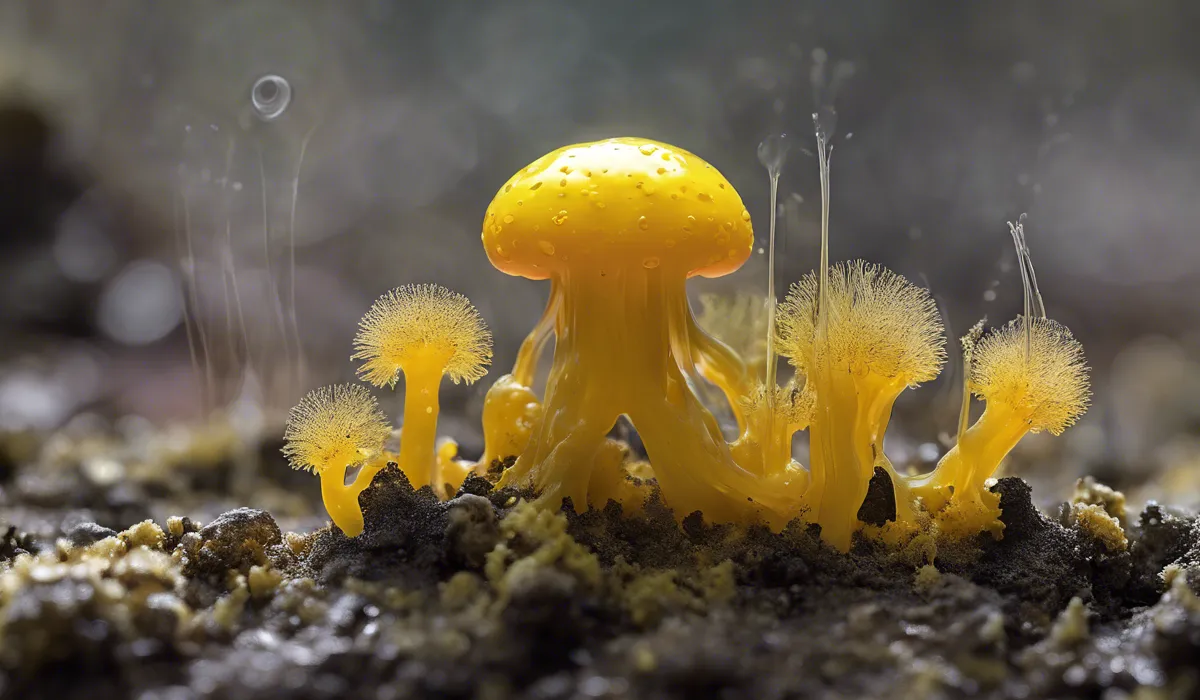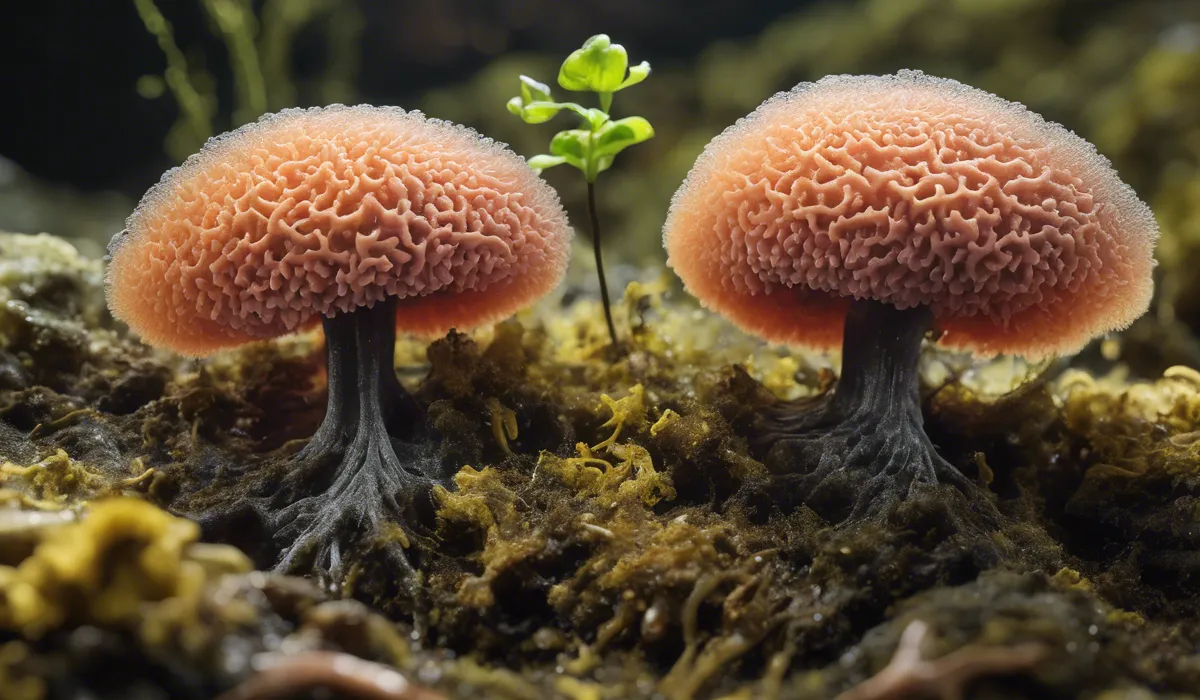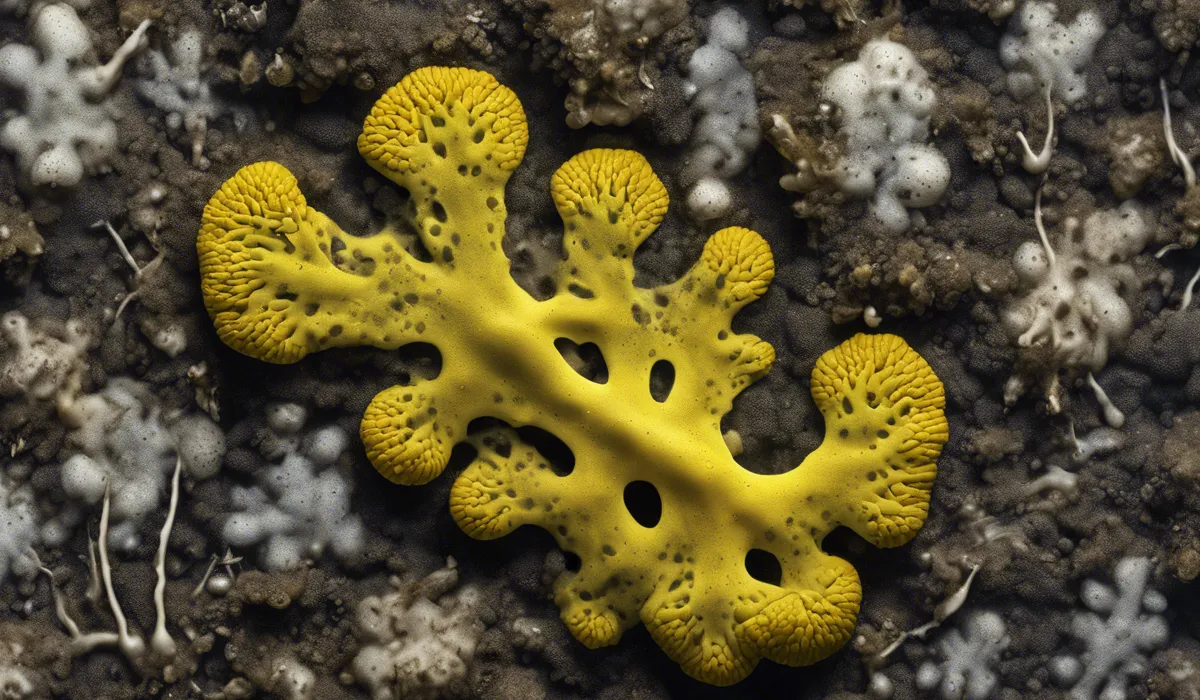Slime molds primarily live in moist, shady environments like forest floors, gardens, and decaying logs. They thrive in these habitats, feeding on bacteria, fungi, and decaying organic matter. Notably, slime molds are found worldwide, adapting to various ecosystems that provide the necessary moisture and food.
Habitat and Distribution of Slime Molds

Overview of Slime Molds as a Unique Group of Organisms
Slime molds are fascinating organisms that challenge traditional classifications. They are not true fungi, although once categorized as such, but belong to the Protista kingdom.
These unique organisms exhibit characteristics of both fungi and amoebas, earning them a spot in the spotlight for biological curiosity.
Common Environments Where Slime Molds Are Found
Slime molds have a knack for thriving in environments rich in organic material. Let’s look closer at the places they call home.
Forests and Woodlands
In the thick of forests and woodlands, slime molds flourish. They are often nestled on the forest floor, taking advantage of the moist, nutrient-rich environment provided by decaying leaves and wood.
Gardens and Cultivated Soils
Gardens are hotspots for slime molds, where they enjoy the cultivated soils. Gardeners might spot them on mulch or in the soil, breaking down organic matter and contributing to the health of the garden.
Decomposing Organic Matter
Slime molds are nature’s recyclers, decomposing organic matter everywhere from decaying logs to compost piles.
This process is crucial, as it returns nutrients back to the soil, fostering a cycle of growth and decay.
Preference for Moist, Shaded Areas
Moisture is the lifeblood of slime molds, and shade helps preserve it. These conditions prevent them from drying out and allow them to thrive and reproduce.
Geographical Distribution: Temperate Regions, Tropics, and Beyond
Slime molds are not picky about where they live, as long as the conditions are right. They are found from the temperate forests of the Northern Hemisphere to the steamy tropics and beyond, showcasing their adaptability.
Life Cycle and Adaptations to Environment

Stages of the Slime Mold Life Cycle
The life cycle of slime molds is a captivating display of adaptation and survival.
Spore Dispersal
Slime mold life begins with the dispersal of spores, which are carried by wind, water, or animals to new suitable habitats.
Germination and Growth
Once they land in a moist environment, spores germinate and grow, feeding on bacteria and other microorganisms in the soil.
Plasmodium Stage and Its Movement
In the plasmodium stage, slime molds exhibit remarkable movement, oozing across surfaces as they search for food. This movement is a sight to behold, a blob-like creature inching along, driven by the need to survive.
Fruiting Body Formation
When conditions are right, the plasmodium transforms into a fruiting body, which releases spores to start the life cycle anew.
Adaptations for Survival
Slime molds are masters of survival, with adaptations that have enabled them to colonize a wide range of environments.
Ability to Withstand Dry Conditions
Despite their love for moisture, slime molds can survive dry spells by entering a dormant state, waiting patiently for the return of wetter conditions.
Chemical Communication and Signaling
Through chemical signals, slime molds communicate and even coordinate with each other, showcasing a level of sophistication that is truly remarkable.
Nutrient Absorption Strategies
Slime molds are efficient at absorbing nutrients, with strategies that allow them to extract everything they need from their surroundings, even in seemingly nutrient-poor environments.
Interaction with Ecosystems

Role of Slime Molds in the Ecosystem
Slime molds play an integral role in maintaining the health and balance of the ecosystems they inhabit.
Decomposition and Nutrient Cycling
As decomposers, slime molds break down dead organic material, making nutrients available to plants and other organisms, thereby driving the essential process of nutrient cycling.
Symbiotic Relationships with Plants and Animals
Some slime molds form symbiotic relationships with plants, helping with nutrient absorption, while others interact with animals, which can help with spore dispersal.
Impact of Environmental Changes on Slime Molds
Changes in the environment can have profound effects on slime mold populations, highlighting the delicate balance they maintain within their habitats.
Effects of Deforestation and Habitat Loss
Deforestation and habitat loss can reduce the available space for slime molds to live, compromising their ability to function within the ecosystem.
Slime Molds as Bioindicators of Ecosystem Health
Because of their sensitivity to environmental changes, slime molds can serve as bioindicators, providing insight into the health of an ecosystem.
Conservation Efforts and the Importance of Preserving Slime Mold Habitats
Conserving slime mold habitats is crucial, not only for the survival of these unique organisms but also for maintaining the health of entire ecosystems. By protecting these habitats, we support the diversity and balance of life on our planet.
FAQs About Slime Mold Habitats
What type of environments do slime molds prefer?
Slime molds prefer moist, shady environments such as forest floors, gardens, and inside decaying logs.
Can slime molds be found in dry areas?
Slime molds typically require moisture to thrive, so they are not commonly found in dry areas.
Are slime molds present in all parts of the world?
Yes, slime molds are found worldwide, in various ecosystems that can provide the necessary moisture and food.
What do slime molds feed on in their natural habitat?
Slime molds feed on bacteria, fungi, and decaying organic matter in their natural habitats.
Do slime molds live above ground or underground?
Slime molds can be found both above ground, on forest floors and in decaying logs, as well as in the upper layers of soil where moisture and organic matter are abundant.
Final Thoughts
Slime molds are predominantly found in damp, shaded areas such as forest floors, gardens, and rotting logs.
These organisms are well-adapted to a variety of ecosystems around the globe, as long as the environments offer sufficient moisture and a supply of bacteria, fungi, and decaying organic materials to sustain them.
